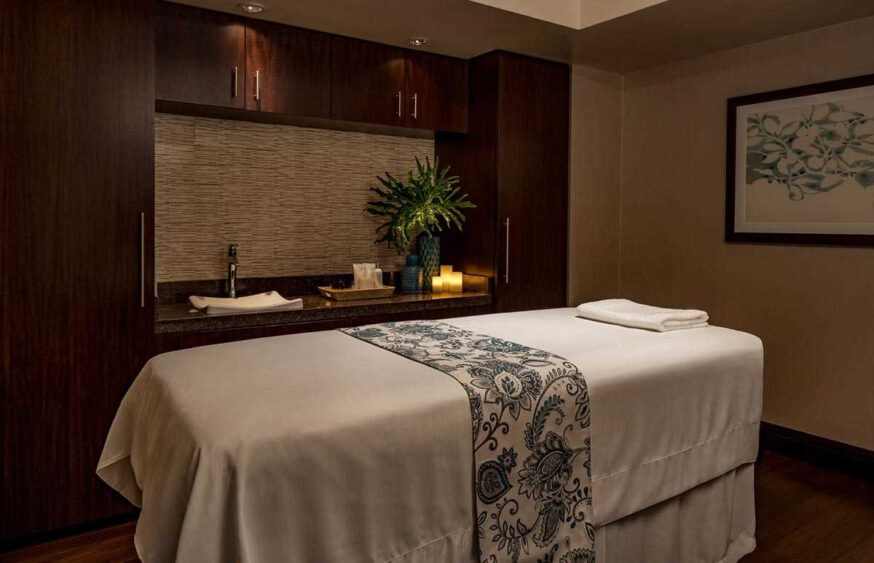As the early morning sun begins to cast its golden hues over the bustling metropolis of Manila, a sense of adventure stirs within the hearts of travelers eager to escape the city's cacophony. A three-hour drive awaits them, a...
As the early morning sun begins to cast its golden hues over the bustling metropolis of Manila, a sense of adventure stirs within the hearts of travelers eager to escape the city's cacophony. A three-hour drive awaits them, a journey that promises to transport them not just across the verdant landscapes of Luzon but also back in time to a period when the Philippines was a jewel in the Spanish colonial crown. This is the journey to Las Casas Filipinas de Acuzar, a heritage resort nestled in the heart of Bagac, Bataan, that serves as a living museum and a testament to the country's storied past.
My own travels to Las Casas have been bookmarked by the passing of a decade, with each visit offering a unique perspective on this cultural sanctuary. Let me take you on a journey through my experiences, painting a picture of the evolution of this historical haven.
The First Encounter
A decade ago, my first foray into Las Casas Filipinas de Acuzar was nothing short of stepping onto a movie set where every corner whispered tales of yesteryears. The resort was alive with the energy of guests who, like me, were eager to immerse themselves in the charm of old-world Philippines. The air was filled with the sounds of laughter and the clicking of cameras, as every restored house seemed to beckon with stories waiting to be uncovered.
One of the key aspects that visitors consider when planning their stay at Las Casas Filipinas de Acuzar is the room prices. In the past, the room prices for a group of 6 people were relatively affordable. For instance, a two-story house with an attic, featuring three comfortable beds, was available at a cost of only 17,000 pesos.
The accommodations were a seamless blend of historical aesthetics and modern comforts, offering a luxurious sanctuary after a day spent exploring. The attention to detail in the restoration was impeccable, with each piece of furniture and every painting feeling like a curated artifact, perfectly in place within the grand narrative of the resort.
The Second Visit
Fast forward to my second visit, and the contrast was palpable. The weekdays at Las Casas now had a quieter rhythm, a stark difference from the lively weekends of a decade past. The once-bustling pathways were now avenues of introspection, where one could wander and ponder the echoes of history without the interruption of a crowd.
But before we delve into the heart of this historical sanctuary, let's talk logistics. If you're planning to drive to the resort, be prepared to leave your car at the entrance. That's right, private vehicles are given a no-entry pass beyond the entrance. But fret not, your beloved car will be safe in the designated parking area, still within the resort's embrace.
As we stepped through the entrance, it was as if we had walked into a sepia-toned photograph. The air buzzed with a sense of yesteryear, and every corner told a story. Las Casas Filipinas de Acuzar isn't just a resort; it's a living museum celebrating the architectural grandeur of historic Filipino homes. These aren't replicas; they're the real deal—heritage houses that have been uprooted from their original locations across the Philippines and given a new lease on life here.
The check-in process was a tremendously thirty-minute long affair, a small price to pay for what awaited us. The resort's jeepney, a nod to the Philippines' most iconic mode of transport, was our chariot. With a chug and a cheerful honk, we were whisked away to our room, which boasted a front-row seat to the serene beach. The sound of the waves was a soothing welcome.
The room, showed signs of wear, a reminder that time spares no one and nothing. The patina of age had settled in, and with it, a sense of nostalgia for the resort's earlier days. It was a spacious affair with three queen beds poised to comfortably accommodate our party of six. The price tag for this slice of luxury? A cool P25,000 for the night. A heartfelt salute to my elder brother and sister-in-law for their generosity in gifting us this experience. The increase in prices was also noticeable, a reflection of the times and perhaps the cost of preserving such a monumental piece of heritage. It's worth mentioning that Las Casas offers a variety of heritage houses to stay in, each with its own price point and story to tell.
Although guided tours are available at Las Casas Filipinas de Acuzar, we opted to explore the site on our own. This decision allowed us the freedom to delve into the details that captured our interest, spending as much time as we wanted in each area. While guided tours can provide valuable insights, self-guided exploration can be equally rewarding for those seeking a more personalized experience.
In the quiet of a weekday afternoon, the resort felt like our own personal playground. The sparse crowd lent an eerie yet peaceful ambiance, reminiscent of a ghost town. Strolling down the cobblestone streets, we were captivated by the parade of Spanish colonial houses, each meticulously restored to its former glory. The craftsmanship on display was a testament to the Philippines' rich cultural tapestry.
The air was alive with the melodies of classic Filipino tunes, a
soundtrack that seemed to narrate our journey through time. It was a
thoughtful touch that enriched the already palpable sense of history.
The Church in Progress
One constant in the ever-evolving landscape of Las Casas was the unfinished church. A decade on, and it remained a poignant symbol of the resort's journey—a masterpiece still in the making. Its incomplete indoor and walls stood as a metaphor for the resort itself, ever-growing, ever-improving, and always reaching for a more perfect rendition of its historical narrative.
A Culinary Conundrum, Price of Heritage DiningHowever, it wasn't all waves and nostalgia. A murmur among those who visited hinted at a growing concern—the rising cost of indulgence. The room rates, while reflective of the unique experience, were just the tip of the iceberg. The real cold splash came with the dining experience. The resort's restaurant, while offering a culinary journey, seemed to have priced its menu for the aristocrats of old rather than the modern budgeted traveler. This point of contention was a smudge on the otherwise picturesque experience, leaving some guests with a bitter taste.
As dusk settled, we ventured outside the resort for our evening meal. As I've said, word of mouth had it that while the food within Las Casas was a decent affair, it might not live up to its price tag. So, we set out to explore local eateries, adding a dash of culinary exploration to our heritage escapade.
Complimentary Breakfast
As the sun peeked over the horizon, we found ourselves greeted by the inviting aromas of a complimentary breakfast at Binondo Hall. The spread, while not vast, was a delightful tapestry of flavors, weaving together the essence of Filipino cuisine with a touch of continental flair.
Our taste buds embarked on a culinary journey as we savored the delicate strands of pancit bihon, a classic noodle dish that is a staple at any Filipino gathering. The salad provided a fresh counterpoint to the rich flavors, while the hotdogs added a familiar comfort food twist. The congee was a warm hug in a bowl, perfect for the slightly cool morning.
The waffles and eggs were a nod to the continental offerings, but it was the kakanin and breads that stole the show. These traditional Filipino treats, made from glutinous rice and coconut, were a sweet and sticky delight that paired perfectly with the morning's first cup of coffee.
With our bellies content and our spirits high, we ventured towards the beach, where the gentle lapping of the waves beckoned us for a leisurely stroll. The sand whispered tales of the sea as we walked, but the adventure didn't stop at the water's edge.
The Sea Bridge
Our journey continued to a newly erected bridge, its name still a mystery to us, stretching out like a steel ribbon over the water. The bridge offered a serene escape, with the wind playing a symphony in the air and the panoramic view of the sea acting as a backdrop to our mid-morning reverie. This addition offered a fresh perspective, a new vantage point from which to appreciate the resort's beauty.
In a corner of this coastal haven, we stumbled upon a mesmerizing display of human head sculptures, each one painstakingly carved from enormous rocks. These silent sentinels seemed to watch over the resort, their stone faces etched with the artistry of a bygone era.
So, if you ever find yourself waking up in Las Casas Filipinas de Acuzar, ready to explore the wonders beyond, remember that you're not just stepping into another day—you're walking through history, and breathtaking view at a time.
The Duality of Preservation
Las Casas Filipinas de Acuzar stands as a testament to the delicate balance between preservation and progress. My two visits, years apart, have shown me the resort's dual nature—the vibrant hub of cultural celebration and the solemn guardian of history. Despite the shifts and changes, the essence of Las Casas remains: a place where the past is cradled in the present, inviting travelers to step into a living, breathing museum where every cobblestone, every carved doorway, and every whispering wave tells the story of the Philippines. It instills a sense of pride and a fervent wish to safeguard these cultural treasures for the generations to come. While it's true that the experience might stretch the purse strings, the memories and the connection to the past are truly priceless.
As I bid farewell to the resort once more, I carry with me the memories of two distinct experiences, both colored by the passage of time, yet both undeniably Las Casas. For those who seek to journey through the annals of history, to feel the pulse of a bygone era, Las Casas Filipinas de Acuzar awaits, ready to reveal its stories to the hearts willing to listen.
If you're still craving more information, feel free to just click the play button below ?, or head on over to my ? YouTube channel to see it in action.
Tips for Future Travelers:
•Prepare for the car park situation and embrace the unique transportation (jeepney, tram, and kalesa) within the resort.
•Set a budget for meals or consider exploring local eateries around Bataan for more affordable options, although keep in mind that they may be a bit of a distance away.
•Don't miss the guided heritage tours to fully appreciate the stories behind each house.
• Pack comfortable walking shoes as you will be exploring a large area with cobblestone streets.
• Respect the cultural heritage of the place by following the rules and regulations set by the resort.
• Take advantage of the various
activities offered, such as river cruises, bike rentals, and water sports. However, it;s important to allocate a budget specifically for that purpose.
• Explore the nearby attractions, such as Mount Samat National Shrine and Pawikan Conservation Center.
• Consider staying overnight to fully immerse yourself in the ambiance of the resort and enjoy the free evening cultural show showcasing Filipino traditional dances such as tinikling, singkil, and maglalatik. (weekends only at 6pm).
• Lastly, take time to relax and enjoy the beauty of the surroundings. Las Casas Filipinas de Acuzar is a perfect place to unwind and escape the hustle and bustle of city life.























